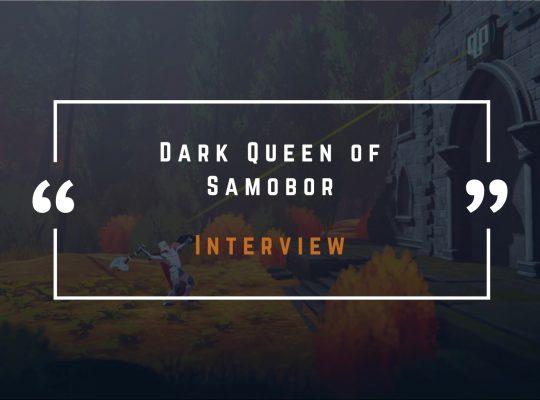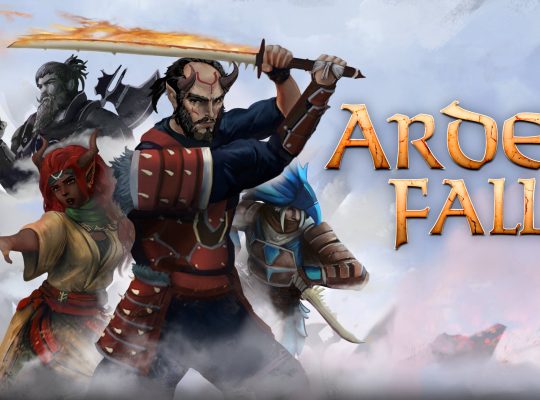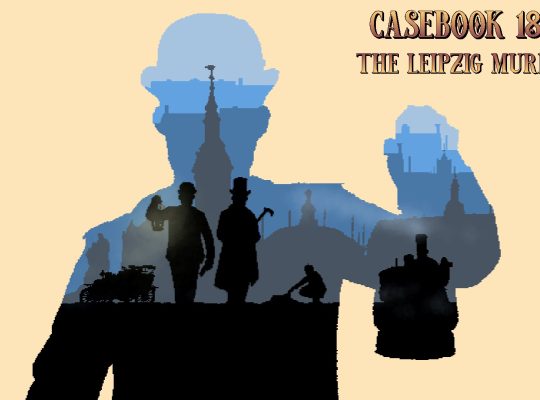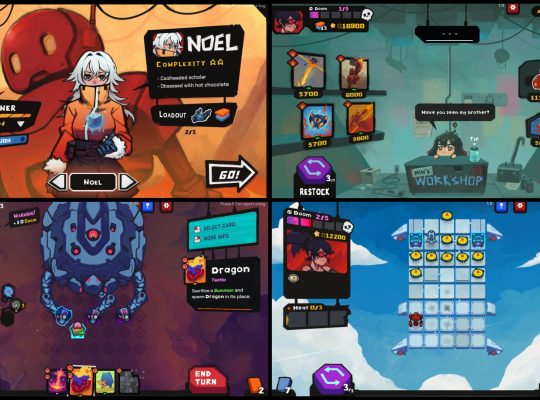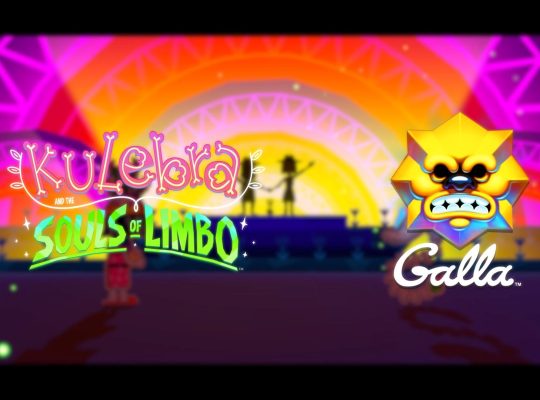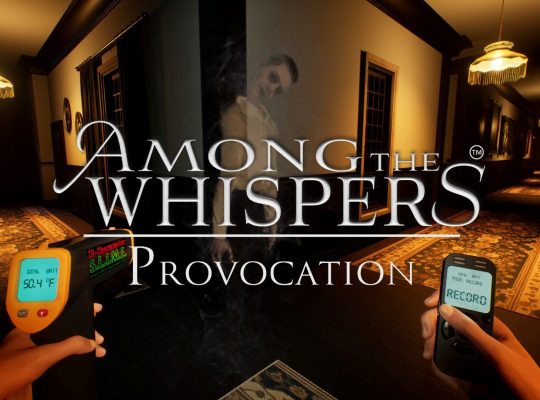Recently, we had the opportunity to get to know the developers of the game The Spirit and the Mouse better, but instead of discussing that game, which has 97% positive user reviews on Steam, they introduced us to their new puzzle game titled Squeakross: Home Squeak Home.
The studio Alblune consists of only two members, Alex and Luka, who plan to release their new game next year. This intriguing puzzle game, which combines logic puzzles and home decoration, and offers a customizable rodent as a pet, was first showcased at the Summer Wholesome Direct 2024. One of the game’s most notable features is the rodent, which lives in your home and actively participates in solving puzzles.
Additionally, you can ask your pet for help using the Logic Assist Mode option, which further enhances the gaming experience. The game features hundreds of puzzles, and each successfully solved puzzle rewards you with pieces of furniture or costumes, which you can then use to decorate your home. Your pet will also interact with all the furniture you place, adding an extra level of interactivity to the game.
More details about Squeakross: Home Squeak Home will be revealed later, including the story of Nini, a mouse addicted to nonograms and the game's mascot. You can find this game on Steam.
Could you please introduce yourselves and share how you met for those who may not be familiar with your studio?
We are a small studio called Alblune, located in Canada. Our studio is composed of two people: Luka and Alex. We have known each other for more than 12 years and have been working in the gaming industry for around 10 years. We have always dreamed of making our own games, but since it is challenging to juggle between a game-dev day job and an indie-dev job, we never found the time to take this step. We are so glad that our first game, The Spirit and the Mouse, gathered interest from publishers. It allowed us to move toward our dream!
Can you walk us through the creative process behind Squeakross: Home Squeak Home? What inspired the combination of puzzle solving and house decorating?
Alex: After we released The Spirit and the Mouse, we wanted to work on a shorter project. I thought about making a nonogram game because I love those games, but they always feel very clinical visually, you know? The plan was to create a The Spirit and the Mouse-themed nonogram, but it shifted toward something else when Luka joined in, and we brainstormed about it together.
Luka: I love nonogram puzzle games as well! However, I always feel they’re not motivating me to complete all the puzzles. I wish there was a reward at the end of each puzzle to encourage me to play more consistently! One of my favorite aspects of gaming is decorating, and I thought it would be a neat combination: Using furniture and decor to create visual-based puzzles! That’s how the idea was born!
How did the development of this game differ from your previous title, The Spirit and the Mouse?
Luka: It was a very unique experience! For The Spirit and the Mouse, we had to create a large environment with level designs, animate various characters, write dialogues and produce cinematics. The game focused heavily on visuals, so we had to create a lot of content to add even just one quest to the game.
Alex: Since Squeakross is a puzzle game, a significant portion involves UI and menus. It has a larger interface compared to The Spirit and the Mouse. There are several screens where the control scheme changes completely, such as the puzzle game phase, housing editor and various customization screens. However, we still aim to inject as much charm as possible, even into the menus!


Puzzle games like nonograms are quite popular. What makes Squeakross: Home Squeak Home stand out from other puzzle games on the market?
Luka: I believe what sets us apart is the combination of house decor and puzzles. Allowing the player a little space to relax and decorate is something I haven’t seen in other puzzle games.
The fact that you have a home to customize gives you another goal besides finishing puzzles!
We’re also working hard to make it beginner-friendly. Advanced players can still have a challenging experience because I realized my friends, who never tried nonograms before, were intimidated by the difficulty of those games. We aim to make ours approachable with good tutorials and a welcoming environment!
The game features a Logic Assist Mode for puzzles. Could you elaborate on how this mode works and what inspired its inclusion?
Alex: We haven’t shown that mode to the public yet, so this is some early info for you! When players use the Logic Assist Mode, they have to select a row or column, and they’ll be able to see what kind of logical solutions there are. We think this is a super helpful tool for anyone who feels stuck on a puzzle and fails to see the next step they can properly take. It’s not giving away the puzzle, it is just a tool to help you better visualize solutions to solve!
Luka: I want to add that everyone is welcome to use the tool! Sometimes, I make more mistakes when I’m tired, but I still want to play the game. Those kinds of in-game abilities make it easier to modify my playstyle depending on how I feel.
You’ve emphasized accessibility features and tutorials. Can you share more details about the specific accessibility options in the game?
Luka: At the moment, this is not an exhaustive list. We are still working on the game and will make adjustments alongside development when we get more feedback about the game. For now, we have features like highlighting mistakes, incorrect moves and displaying logically solvable hint lines. Also, the hint numbers on the side are designed with readability and colorblindness in mind. There is an in-game manual so players can revisit the tutorials from the main menu at any time.
Alex: During gameplay, we have two additional options to Logic Assist: One is an automatic case-solving button, and the other one is a show mistakes button. Unlike other nonogram games, the cells with mistakes remain visible even after you move your cursor. In theory, you could abuse this system and bypass all solving. We won’t judge!


What can you tell us about the visual design of Squeakross: Home Squeak Home? How did you approach creating a cozy yet puzzle-focused atmosphere?
Luka: Our main inspiration has been Wii games! I love the bright, bubbly design of the UI. Many apps and websites have a dark mode by default nowadays, so I wanted Squeakross to be colorful! The game is not very serious. You have small rodents walking around in a small home, and the puzzle menu is a furniture catalog! We used a grid-like pattern for many backgrounds, similar to a nonogram grid.
The rodent’s costumes are a fun touch! How many customization options can players expect for their pets, and do any of them impact gameplay in meaningful ways?
Alex: Thank you! Players will be able to customize their rodents using the Rodent Character Editor. There are many possibilities! Rodent costumes are divided into three categories: hats, nose and neck accessories, offering a lot of different combinations to make your rodent look super cute!
Luka: The costumes do not impact the gameplay but will brighten your mood. Seeing a cute little rodent walking in human-like costumes makes me happy!
How much freedom will players have in decorating their in-game home? Are there specific themes or styles they can explore?
Luka: Players will have access to a variety of rooms to decorate. We are also designing furniture sets similar to those in Animal Crossing games. You can look forward to matching sets of wallpaper, flooring and furniture items that can be combined to create your ideal rodent residence. Your rodent friend will also be able to interact with the furniture you place in your home, allowing you to sit back and watch them in action. It’s very entertaining!


The game’s mascot, Nini, sounds like an intriguing character. Can you tell us more about her role in the game’s story and how she fits into the puzzle theme?
Luka: I believe it’s important to give your game a personality. While brainstorming about why a player would get a home in a nonogram game, we came up with the idea that the house was part of a program called “Home Squeak Home,” where you purchase a house and receive a catalog of nonograms to solve to obtain furniture. We created Nini to be the CEO of the Home Squeak Home company!
She is addicted to nonogram puzzles and wants everyone to enjoy them. She is giving out nonogram catalogs to anyone who buys a home through her company, promising free furniture for each solved nonogram! Her brother, Nono, is the one building all those furnishings. She also serves as a guide through tutorials and will keep in touch with you through in-game emails during the game!
Do you have plans to release Squeakross: Home Squeak Home on platforms beyond Steam, such as consoles or mobile?
Alex: Nothing we can announce yet, but we would certainly love to bring the game to more platforms in the future.
How significant was Wholesome Direct to you, and what was the overall reception?
Alex: The Wholesome Direct was an amazing boost for our Steam page. People seemed delighted about the game, and we received such a positive reaction from players!
Initially, we thought we would be the only ones interested in this game. However, we’ve received enthusiastic feedback on our social media, with many people exclaiming, “THIS GAME WAS MADE FOR ME!” It’s great to see that it resonates with so many people. We’ve also had many individuals express interest in trying nonograms for the first time because this game features rodents.
Luka: Yes, I feel that’s why we’re emphasizing beginner tutorials and accessible options. Some people said they would try Squeakross simply because it features rodents, even though they knew nothing about nonograms before. I don’t want to let them down!




